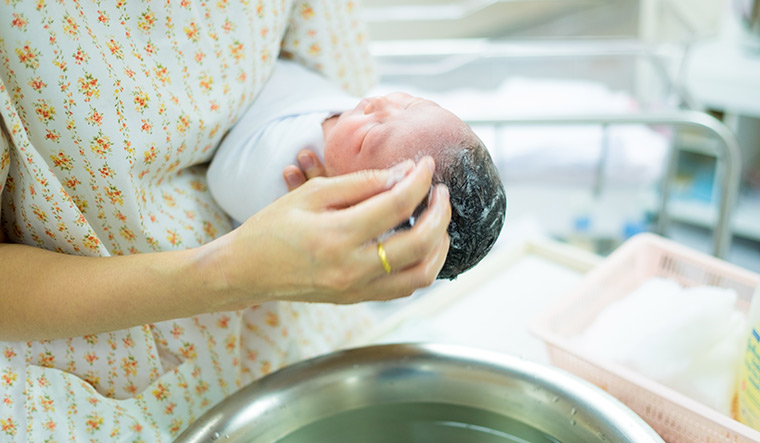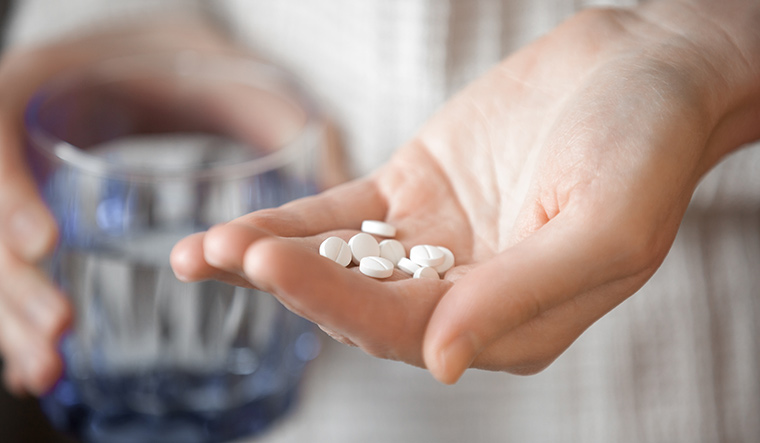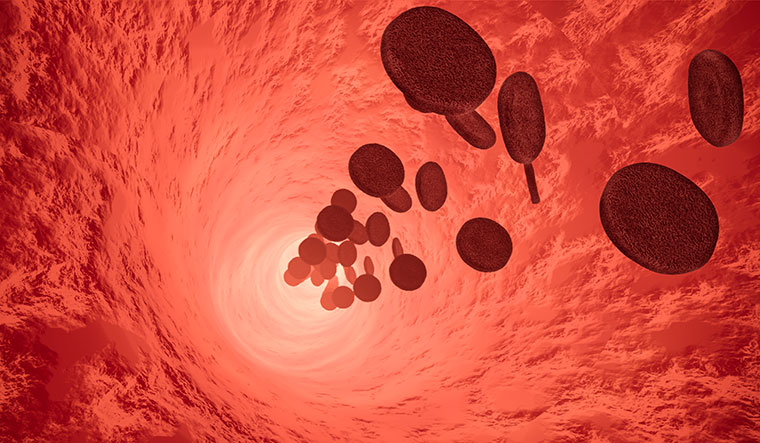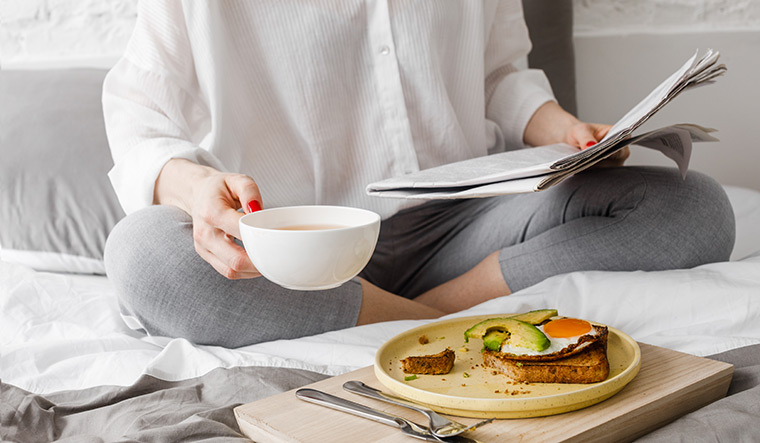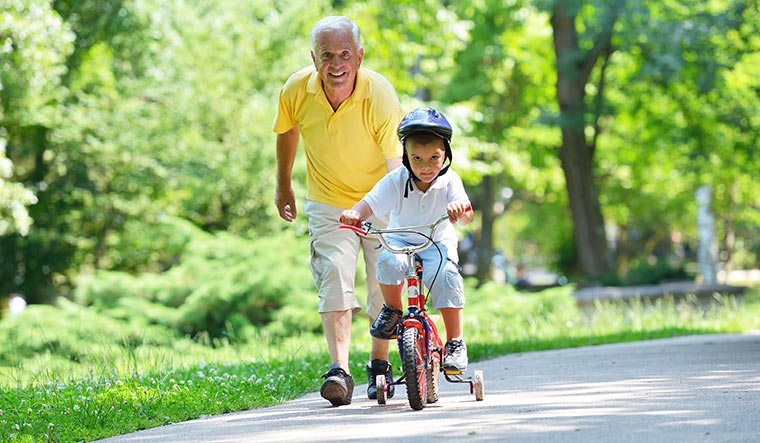Newborns are often given a bath within a few hours of their birth.
But, according to a US study published in the Journal for Obstetrics, Gynecologic, and Neonatal Nursing, holding off baby’s first bath for 12 or more hours after birth increased the rate of exclusive breastfeeding during the newborn’s hospital stay, which, in turn, could boost the odds of breastfeeding after discharge, too.
The study included 996 healthy mother-newborn pairs. Among them, 448 babies were given baths shortly after birth, while 548 babies were bathed at least 12 hours after birth.
Exclusive breastfeeding rates increased from 59.8 per cent (immediate bath group) to 68.2 per cent (delayed bath group). Also mothers of babies who had delayed bath were more likely to have discharge feeding plans that included breastfeeding.
The effect was stronger in women who delivered vaginally compared to those who had C-section deliveries, probably because babies are placed on the mother’s chest immediately after a vaginal delivery, while skin–to-skin contact is delayed after C-section deliveries.
According to the study author, two factors—smell and temperature—may explain the increased rates of breastfeeding associated with delayed bathing. The similarity in smell between the amniotic fluid and the breast may encourage babies to latch.
De-stressing love
A study published in the journal Psychophysiology suggests that just the thought of our loved one can help regulate the body's cardiovascular response to stress.
For the study, 102 adults in long-term romantic relationships were asked to complete a stressful task. They had to submerge one foot into three inches of cold water ranging from 3.3–4.4°C. The participants’ blood pressure, heart rate and heart rate variability were measured before, during and after the task.
The participants were divided into three groups: The first group had their romantic partner in the room while they completed the task; the second group was asked to think about their romantic partner during the task and the third group was asked to think about their day during the task.
Those who had their partner physically present in the room or who thought about their partner had a lower blood pressure response to the stress of the cold water compared to those who thought about their day.
“This suggests that one way being in a romantic relationship might support people's health is through allowing people to better cope with stress and lower levels of cardiovascular reactivity to stress across the day,” said the lead researcher.
Aspirin: risks outweigh benefits
According to a British study published in the Journal of the American Medical Association, the small benefit in reducing the risk of heart attack and stroke by taking daily aspirin is offset by an equal increase in the risk of serious bleeding.
To assess the role of aspirin in preventing cardiovascular events and bleeding in people without cardiovascular diseases, the researchers analysed 13 randomised clinical trials with more than 1,64,225 participants, aged 53 to 74.
Taking aspirin was associated with an 11 per cent lower risk of cardiovascular events. But, the risk for a major bleeding event increased by 43 per cent.
Aspirin decreased the absolute risk of heart attack, stroke or death from heart disease by 0.38 per cent. But, it increased the absolute risk of major bleeding by 0.47 per cent.
Soft killer
Drinking soft drinks while exercising or working outside in hot weather may increase the risk of kidney disease, according to a study published in the American Journal of Physiology—Regulatory, Integrative and Comparative Physiology.
The researchers studied 12 healthy adults, average age 24, in a laboratory setting that mimicked working at an agricultural site on a really hot day.
The participants completed 30 minutes on the treadmill followed by 15 minutes of lifting, dexterity and sledgehammer swinging activities.
While resting for 15 minutes after their exercise, they drank 16 ounces of either a high-fructose, caffeinated soft drink or water.
They repeated the cycle three more times for a total of four hours.
The researchers measured the participants’ core body temperature, heart rate, blood pressure, body weight and markers of kidney injury before, immediately after, and 24 hours after each session.
A week later, the volunteers repeated the four-hour session once again. But, those who had soft drinks in the previous trial received water and vice versa.
The participants had higher levels of creatinine in the blood and a lower glomerular filtration rate—both markers for kidney injury—after the soft drink trial, but not when they drank water. They also had higher blood levels of vasopressin, an anti-diuretic hormone that raises blood pressure, and they were slightly dehydrated after the soft drink trial.
Sleep like a baby
Babies fall asleep faster when they are rocked to sleep. A Swiss study published in Current Biology suggests that rocking motion helps adults sleep better, too. It also boosts memory.
The study included 18 healthy young adults who spent three nights in a sleep lab. The first night was meant to get them used to sleeping there. The second night, the participants slept on a gently rocking bed and on the third night, they slept on an identical bed that was not moving.
The participants fell asleep faster while rocking. Once asleep, they also spent more time in non-rapid eye movement sleep, woke up fewer times and slept more deeply.
To find out if better sleep influenced memory, participants studied word pairs. The researchers then measured how accurately they recalled those paired words in an evening session compared to the next morning.
People did better on the morning test when they were rocked during sleep.
Additionally, the studies found that continuous rocking motion helped to synchronise brain activities that are important in both sleep and memory.
Did You Know
People who eat one or more serving of fried food per day have an 8 per cent higher chance of dying early from all causes compared to those who do not eat fried food.
The BMJ
New guidelines
The popular anti-clotting drug warfarin is no longer considered the preferred treatment for atrial fibrillation (AFib), a common heart rhythm disorder.
According to new guidelines jointly issued by the American Heart Association, the American College of Cardiology and the Heart Rhythm Society, non-vitamin K oral anticoagulants (NOACs), a newer class of blood-thinning medication, is a better alternative to warfarin for reducing the risk of stroke associated with atrial fibrillation.
AFib is a type of irregular heartbeat in the atria, or upper chambers of the heart, that can lead to blood clots, stroke, heart failure and other heart-related complications. Atrial fibrillation is associated with a five-fold increased risk for stroke. About 15–20 per cent of people who have strokes have Afib.
“New scientific studies show that NOACs may be safer for patients because there is less risk of bleeding, and they may also be more effective at preventing blood clots than warfarin,” said Craig T. January, co-chair of the focused update.
However, NOACs are not recommended for patients with moderate to severe mitral stenosis (narrowing of the mitral valve), or for patients with an artificial heart valve. The new guidelines also recommend weight loss for AFib patients who are overweight or obese.
Natural painkiller
A good night’s sleep is the best painkiller. According to a study published in the Journal of Neuroscience, a single night of inadequate sleep can augment physical pain by heightening pain sensitivity and numbing the brain’s painkilling response.
The researchers applied uncomfortable levels of heat to the legs of 25 healthy young adults while scanning their brains twice—once after a good night’s sleep and once after a night of no sleep.
All sleep-deprived participants reported feeling discomfort at lower temperatures. Brain scans showed that activity in their somatosensory cortex, previously associated with the location and intensity of pain, was enhanced following sleep loss.
Sleep deprivation also decreased the activity associated with pain relief in two regions, called the striatum and the insula, that is involved in processing pain, including evaluating its severity and controlling our emotional response to it.
The researchers further surveyed more than 230 adults of all ages. They were asked to report their nightly hours of sleep, as well as their day-to-day pain levels over the course of a few days. The participants reported increased pain during the day after reporting poor sleep the night before.
Breaking breakfast myth
Eating breakfast does not help you lose weight, according to an Australian study published in The BMJ.
It is widely suggested that eating breakfast can help maintain a healthy weight. But an analysis of 13 randomised controlled trials concluded that there wasn’t enough evidence to suggest that eating breakfast promotes weight loss or that skipping breakfast leads to weight gain.
On the contrary, the review found that people who ate breakfast consumed, on average, about 260 calories more per day than people who skipped breakfast.
Also, they weighed an average of 0.44kg more than those who skipped breakfast.
Unlike popular belief, people who skipped breakfast did not feel hungrier during the day nor did they eat more. There was no significant difference in metabolic rates between breakfast eaters and skippers, either.
“This study suggests that the addition of breakfast might not be a good strategy for weight loss, regardless of established breakfast habit,” the study concluded.
Did You Know
Exercising regularly was associated with a 12 per cent lower risk of falls, 26 per cent reduced risk of injurious falls and 16 per cent reduced risk of fractures in older adults.
JAMA Internal Medicine
Body size matters
Women who are tall and slim are more likely to reach 90. According to a Dutch study published in the Journal of Epidemiology and Community Health, body size (height and weight) may influence women’s lifespan, but not men’s.
While body size did not matter for men, exercise helped both men and women live longer. For the study, 3,646 men and 4,161 women, aged 68 to 70, provided information about their weight and height, weight when aged 20, and their leisure time physical activity, in 1986. The researchers followed them until death or the age of 90, whichever came first.
Among them, 433 men (16.7 per cent) and 944 women (34.4 per cent) lived to the age of 90.
Women who were taller, had weighed less at the start of the study, and had put on less weight since the age of 20, were more likely to live to the age of 90 than women who were shorter and heavier.
In fact, women who were more than 5 feet 9 inches tall were 31 per cent more likely to reach 90 than women less than 5 feet 3 inches. Height and weight, however, did not influence longevity in men.
Beating bad
Breast cancer patients have a higher risk of developing atrial fibrillation, a condition marked by irregular heartbeat.
Breast cancer is the most common cancer in women worldwide and the second most common cancer overall. Modern treatment regimens ensure that approximately 80 percent of breast cancer patients become long-term survivors. But these survivors can have long-term complications from both the cancer and related treatments.
The researchers hypothesised that breast cancer patients may be at a higher risk of developing atrial fibrillation because breast cancer induces inflammation. To find out, they compared the medical records of 74,155 female breast cancer patients with 2,22,465 women of the same age from the general population.
Breast cancer patients had an increased risk of atrial fibrillation, and the risk was dependent on age and time since diagnosis, the study published in the journal Heart Rhythm found.
For patients younger than 60, the risk more than doubled in the first six months after diagnosis, and rose 80 per cent from six months to three years after their diagnosis. The risk for women older than 60 was similar to the general population during the first six months, but increased 14 per cent from six months to three years after diagnosis.
Did You Know
Night owls may have an increased risk of heart disease and type 2 diabetes than early risers. They tend to have erratic eating patterns and consume more unhealthy foods such as alcohol, sugars, caffeinated drinks and fast food.
Advances in Nutrition
Stay active
Older adults who were physically active, either by exercising or just doing daily housework, kept their minds sharp, even if their brains showed signs of lesions or other markers linked to Alzheimer's disease or dementia, according to findings of a study published in the journal Neurology.
The study included 454 older adults, 191 of whom had dementia.
The participants had physical exams and tests of memory and thinking skills every year for 20 years. All of them agreed to donate their brains for research after death.
The average age at death was 91. About two years before death, each participant was asked to wear a wrist-worn device called an accelerometer, which measured every single movement round the clock, including walking around the house and exercise routines.
Participants who moved around the most had better thinking and memory skills. Those who had better motor skills (that help with movement and coordination) also had better thinking and memory skills.
For every standard deviation of increase in physical activity and motor skills, the participants were 31 per cent and 55 per cent less likely to develop dementia, respectively.
The link between higher activity and better thinking skills remained consistent even in people who had dementia.
CONTRIBUTOR: SHYLA JOVITHA ABRAHAM

